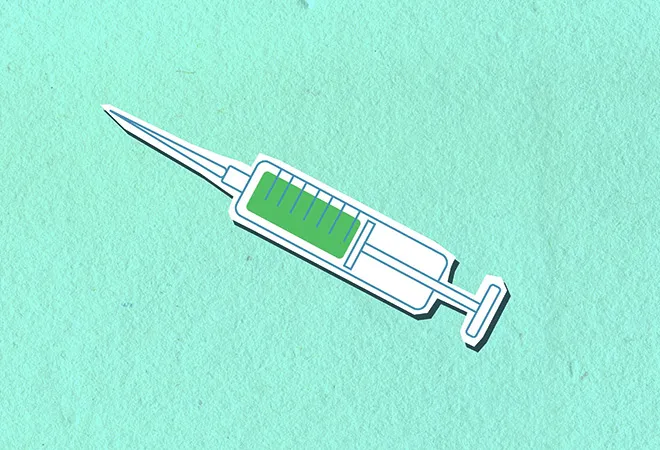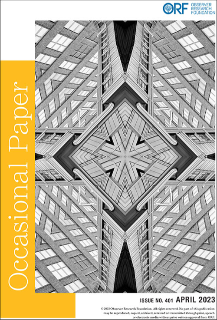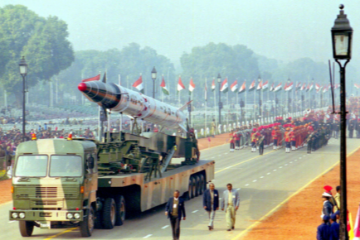
This article is part of the series — 2021: The Year of Vaccines.
Within less than a year, a vaccine against the COVID-19 pandemic has moved from being the holy grail to a goal that has now been attained. We should, of course, thank science for it. The mobilisation of resources by pharmaceutical firms, some even betting their entire capacities on the successful development of the COVID vaccine, and the huge push given by a number of governments — not only to research but also to start production capacities even before the candidates for vaccine were vetted — have been essential. It is also clear that luck has played a role — at last count, with 240 plus separate searches for the right candidates — there are always going to be winners and losers.
We now hope for a second generation of vaccines that would not solely neutralise the binding or “spike” elements in the coronaviruses, but would also fight back the core virus and be put to a much larger use marking the dawn of a medical revolution.
Today, not only do we have a new spectrum of messenger RNA-based vaccines that have a quicker development time, but also one that is cheaper to upgrade and holds the promise of going after other coronaviruses, whether these cross the barrier from the zoonotic sphere again or are simply the common flu and cold. But we now hope for a second generation of vaccines that would not solely neutralise the binding or “spike” elements in the coronaviruses, but would also fight back the core virus and be put to a much larger use marking the dawn of a medical revolution.
The number of successful entrants also brings a diversity that will be helpful, not only medically but also economically and in terms of the various targeted publics. The heavy hitters (Pfizer and Moderna)—based on messenger RNA — are also products whose logistics, from storage to distribution, are challenging and expensive. Another category based on recombinant adenovirus (AstraZeneca-Oxford) has a slightly more limited efficacy and may prove less adaptive to an older population, but it is also vastly cheaper to produce, holding the promise of quick and widespread delivery to low-and middle-income societies, which in fact also have a lower age structure. In the same category, a special mention should be made of Russia’s Sputnik V vaccine. Maligned because it was put in use before the tests were completed, it now seems to combine efficiency, low cost, and relatively easy conservation for distribution — production is the main challenge. Covaxin, India’s first in-house vaccine, is also in this category. A third category of vaccines made from inactivated viruses (Sinopharm and Sinovac), presents a bigger challenge to achieve security in the production process. Yet, they were put to use early, partly because the research phase was less innovative than the new strain of RNA-based vaccines.
It is not going to be 100 percent through the vaccine route but everything helps.
Ideally, everyone should be vaccinated. Yet, reversing the pandemic, apart from prophylactic measures, is an issue of statistical coverage; it is not going to be 100 percent through the vaccine route but everything helps. Hence, the race is far from over. There are now tests combining several vaccines. The number of candidates likely to pass or are now passing Phase III clinical trials is increasing every month — lately being the Valneva, Johnson & Johnson, and CanSino vaccines. And another race has started for the so-called “second generation” vaccines; the most publicised part focuses on fast-tracking new RNA-based vaccines targeting COVID-19 variants. But another promising category involves viral vectors that target viral proteins rather than the “pikes” binding to human receptors. It is a quest that began against cancer and that is accelerating with the advent of the coronavirus pandemic.
Overall, these achievements should put to rest the anti-scientific or conspiracy theories that inevitably proliferate at times of a pandemic, and where today’s social media have proven to be the successor to the rumors which constituted information in the pre-Gutenberg world.
International distribution (or, more exactly, sale) of China’s vaccines is at this moment far behind the promises made by Beijing to its partners.
Yes, there remain grey areas. Chief among these is the reluctance of Chinese companies to release complete medical testing information or to submit to international procedures. This is no longer the case with Russia’s Sputnik V, and China, therefore, confirms yet again its own notion of working in a multilateral context; this means working alongside but separately from the rest of the international community. At this point, this remains a side concern. International distribution (or, more exactly, sale) of China’s vaccines is at this moment far behind the promises made by Beijing to its partners.
Alongside the scientific successes outlined above and leaving aside nationalist claims, geopolitical issues, and “vaccine diplomacy,” the pressing issues are much more mundane — they involve commercial costs, production issues, and distribution. This is a much bigger trial than masks and tests have been in the first phase of the pandemic, and it may be a long term one if new vaccine variants need to be constantly created, as is already the case for flu vaccines.
India, because of its strong experience in drugs and vaccine production, is slated to become a key global centre, with or without several nationally engineered brands.
In these categories, the United States, the United Kingdom, and on a much smaller scale, Israel appear to be the early winners. It’s not surprising for Israel — top heavy with science, with a government that made up for its poor management of the pandemic with foresight and daring on the vaccine procurement issue, with a symbiotic relation between the Army and citizenry that has been put to good use for logistics on a small territory. The same case might roughly be made for the United Kingdom — with an important reservation; if each of the 27 EU countries had launched a similar national procurement race, the results would have been collectively disastrous. The surprise here is the success of the United States — in spite of sharp tensions between state governors and the federal agencies, Operation Warp Speed and the massive risk capital spread around a diversity of vaccine candidates for production have resulted in an early and massive distribution of vaccines — as of 15 February, 55 million doses, and now 1 million per day. Contrary to expectations, this surpasses China (40 million) and the explanation lies with the slow production roll-out of Chinese vaccines, which are not easy to produce. The almost total absence of other East Asian nations — which were models in containing the pandemic — is in part due to this early success, which made the quest for vaccines less urgent, and in part to the absence of locally engineered vaccines. India, because of its strong experience in drugs and vaccine production, is slated to become a key global centre, with or without several nationally engineered brands.
Which leaves the European case, often criticised internally and sometimes from the outside. It exemplifies Europe’s achievements and gaps. To create a unified procurement policy, it avoided competition among 27 rich states that would have globally driven up purchase prices. To decide a fair distribution among these 27 member states — whose per capita GDP varies between US$ 8,000 and 80,000 — is one of the most solid signs of cohesion that one could give. But to go slow on the decisions and implementation is almost a trademark of EU action, even if this particular issue rose to the top of the pile. The choice to save not only the taxpayers’ money but also a limited EU level budget resulted in less advanced purchase commitments for as of yet non-existent vaccines. The EU is now making up for this, but in a situation where the queue is long. To its credit, the EU immediately joined the COVAX and Gavi alliances, when some others did not. It has exempted low- and middle-income countries from any export restrictions, and it has committed the equivalent of US$ 1 billion in 2021 to provide vaccines for these countries and, for instance, 32 million doses to ASEAN nations by the end of this year.
Extremely divergent rates of positivity and death rates are clearly not only tied to health resources and prevention.
Throughout this ordeal, one must remain modest. A few nations (often island states at that or with an inactive land border such as South Korea) have been models for containing the pandemic. Zero COVID is likely unattainable without vaccines, in any case. Extremely divergent rates of positivity and death rates are clearly not only tied to health resources and prevention. It is, therefore, around vaccines and their availability that a final judgment may hopefully be passed one day soon.
The views expressed above belong to the author(s). ORF research and analyses now available on Telegram! Click here to access our curated content — blogs, longforms and interviews.




 PREV
PREV


